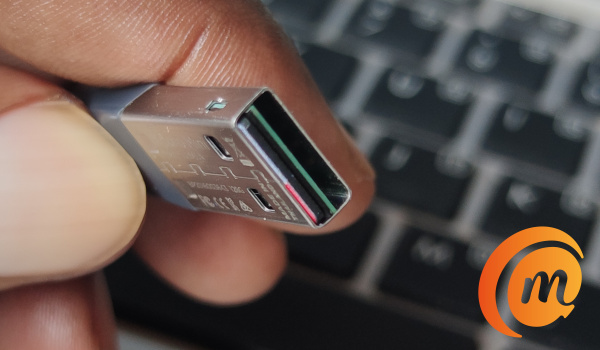News flash! Yes; your phone can be hacked while you are charging it at a public point. If you plug your phone to charge using a USB port at a public place, or plug it to someone’s PC or laptop, it can be hijacked or infected with malware. It is called juice jacking.
No; I didn’t make that up to alarm you. I mean it for real. Your smartphone’s USB port is a doorway to your phone and you should be careful where you plug it in. Let me explain it in clear terms to you with something you can relate to.
You see, if you are able to plug your phone to your laptop or PC to copy files, then someone with access to whatever you plug your phone into can copy files – including malware – to your phone and hijack it. You do get the picture now; don’t you? That is why a smartphone can be hacked while you are charging it.
USB charging chords are no longer just charging cables. They are also transmission channels for data. In effect doorways to your phone. So, your phone can be hacked or infected if you plug it into someone’s PC. If a malicious person sets up a public charging kiosk and you plug your phone there…..your guess is as good as mine. Gone girl.
Even where the charging station is run by trusted operators, a malicious person acting independently can plug in a laptop and load malware into the network. The result is that anyone who plugs in their smartphone there to charge is vulnerable and can be compromised. The attacker has enough access to take full control of your device through an implanted malware.
Simply put, when you plug your precious smartphone into a USB outlet or device, you open it up to data transfer, and in the case of malicious actors, you could lose financial information, or get it infected with a virus, ransomware or some other malware. Nasty business.

What can you do to prevent your phone from being hacked while you are charging it?
- Abstinence. No; I’m not talking about sex. Avoid charging your smartphone via public spots. As I have repeated to people a million times in the last two decades, physical access is the easiest way gadgets get infected or hacked. Stay away. Get a power bank for when you are out and about.
- Buy a charging-only cable. If you must use a public point, one thing you can do to prevent your smartphone or tablet from being compromised or hacked while you are charging it is to use a charging-only cable. In addition to the standard, full capacity USB cable that comes with your phone, you can also buy a charging-only cable for use in public places. That kind of cable does not have the ability to transmit data. It charges only, and so cannot be used to hack or infect your device.
- Avoid USB outlets: If you must charge your phone while away from home, do it using the standard power outlets and not computers or any USB outlet. Generally, avoid plugging your smartphone into random USB ports. Even a USB flash drive plugged in can spell disaster.
- Lock your phone. “But I don’t have anything to hide” Don’t be an idiot: you have a lot to lose, including bank account details and other critical information. Put a password on your smartphone.
- What of mobile antivirus? The jury is still out on how effective these are, but you should consider installing one from a trusted name e.g. Avast, AVG, ESET, Kaspersky, Norton, and others.
Hopefully, you won’t forget the lessons shared here. You really do not want to be a victim of malware and have your data stolen or device in the control of a stranger. Take steps to prevent your phone from being hacked when you are charging it.
Don’t give physical access to your phone. That includes leaving it in someone’s hands while you dash to the loo, or plugging it into someone’s laptop to charge. The owner of the laptop might mean no malice, but it won’t matter if the laptop is infected already. It gets passed to you. Stay safe.